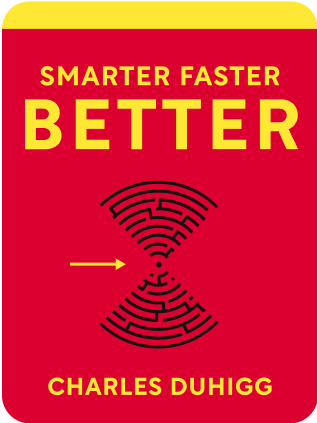

This article is an excerpt from the Shortform book guide to "Smarter Faster Better" by Charles Duhigg. Shortform has the world's best summaries and analyses of books you should be reading.
Like this article? Sign up for a free trial here .
What is cognitive closure? How can it get in the way of productive goals?
Cognitive closure can cause you to set goals that are quick and easy to complete instead of goals that help you achieve more. Use stretch and SMART goals together to overcome this trap, set productive goals, and get more done.
Read more to learn about cognitive closure and how it impacts goal setting.
What Is Cognitive Closure?
When used alone, stretch and SMART goals both have pitfalls. For instance, if used alone, stretch goals can become too overwhelming. You’ve come up with big ideas, but have no idea how to act on them. Because you’re unsure how to move forward, you just do nothing.
Likewise, if you simply give yourself a list of snappy SMART goals without any overarching goal to tie them together, you can lose sight of your higher purpose and the objectives you should prioritize to achieve that purpose. You risk becoming too focused on achieving cognitive closure.
Cognitive closure is a thought process that’s rooted in a preference for decisiveness over ambiguity. In general, your brain is drawn to making quick, clear choices, rather than remaining in a state of uncertainty or confusion. You find yourself wanting to get things done and meet your goals because it makes you feel productive. It brings you a feeling of closure that is satisfying.
Chasing cognitive closure can sometimes be useful. It can help you to move forward efficiently, rather than spending a long time going back and forth over what to do. However, it becomes problematic when feeling the closure and satisfaction that comes with completing a goal becomes more important to you than the actual productivity of the goal. If you fall into this trap, you may be tempted to set SMART goals that are quick and easy to complete so that you can feel closure swiftly, rather than productive goals that will help you to move forward and achieve your higher aims.
Overcome Cognitive Closure
To overcome these pitfalls and achieve maximum productivity, you should use stretch and SMART goals together. You should start with an ambitious stretch goal and then flesh out the process of achieving that goal using targeted SMART goals.
Doing this makes the goal-setting process smoother in two ways. Firstly, if you break down your ambitious stretch goal into smaller, easily actionable SMART goals, you can avoid becoming overwhelmed. Creating concrete steps towards meeting the stretch goal makes it much more manageable. You’ve created a framework you can follow to move closer to achieving your dreams.
Secondly, pairing your SMART goals with a stretch goal helps you to avoid the trap of cognitive closure. The stretch goal provides you with the focal point that you need to ensure that your SMART goals are truly productive, and not just fast-track routes to closure. If you create your SMART goals keeping your stretch goal in mind, you’re less likely to veer off course.
Be Flexible With Your Goals
One final element of successfully using SMART and stretch goals is a willingness to be flexible with your goals.
In our pursuit of cognitive closure, we can become unwilling to revisit our goals once we’ve set them. We want to chase the satisfaction of meeting those goals, and not risk losing our closure if we revisit our goals and find that they’re no longer appropriate for our situation. Because of this, we slip into a state of rigidity of thought. We become unwilling to consider any other possibilities than our current goals.
If we become too rigid and refuse to revisit our goals, we could spend large amounts of time focusing on a goal that’s no longer productive. Instead, we need to be open to constantly evaluating and reconsidering our goals, and deciding whether they’re still the best way forward. Do we have new information that affects the relevance of our goals? Have our priorities changed? If so, we need to set new goals accordingly.
When you understand cognitive closure and work to overcome it, you can set and achieve more productive goals.

———End of Preview———
Like what you just read? Read the rest of the world's best book summary and analysis of Charles Duhigg's "Smarter Faster Better" at Shortform .
Here's what you'll find in our full Smarter Faster Better summary :
- Why becoming more productive isn’t about working longer hours or constantly pushing yourself to do more
- The 8 principles for improving productivity
- How to create a work culture in which each employee is truly valued






